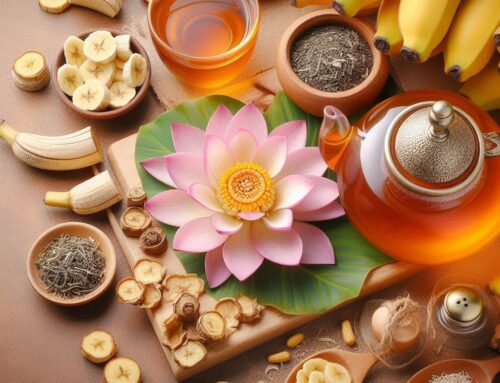
Introduction: Why Grow Papaya in Pots?
Papaya cultivation has long been associated with large open fields and tropical climates. However, with advancements in gardening techniques, it is now possible to grow papaya trees in pots and containers. This innovative approach to papaya cultivation offers numerous benefits for both seasoned gardeners and those with limited space.
Growing papaya in containers allows individuals living in urban areas or with small gardens to enjoy the beauty and taste of this tropical fruit. It provides an opportunity for anyone, regardless of their location or garden size, to experience the joy of growing their own fresh produce.
The benefits of growing papaya in pots extend beyond accessibility. Container gardening offers better control over soil quality, drainage, and sunlight exposure. This enables growers to create optimal conditions for their papaya plants, ensuring healthy growth and high yields.
Additionally, cultivating papaya in pots eliminates the need for extensive land preparation and maintenance typically associated with traditional field cultivation methods. It simplifies the gardening process while still yielding delicious fruits that can be enjoyed by individuals or shared among friends and family.
In this section, we will explore the various advantages of growing papaya in pots as well as provide practical tips on how to successfully cultivate these tropical trees within a confined space. Whether you are a seasoned gardener looking for new challenges or a beginner eager to embark on your first gardening journey, discovering the world of container-grown papayas can be an exciting endeavor.
Choosing the Right Variety of Papaya for Container Gardening
When it comes to container gardening, choosing the right variety of papaya is crucial for success. While papaya plants are typically known for their large size and sprawling growth habit, there are certain cultivars that are more suitable for growing in pots or containers.
One of the best options for container gardening is to look for dwarf papaya plants. These varieties have been specifically bred to have a more compact growth habit, making them ideal for smaller spaces such as balconies or patios. Dwarf papayas can be easily managed and pruned to maintain a manageable size.
When selecting a container-friendly papaya cultivar, it’s important to consider factors such as fruit size, taste, and disease resistance. Some popular choices include the ‘Tainung’ variety, which produces small to medium-sized fruits with a sweet flavor. Another option is the ‘Waimanalo’ variety, known for its disease resistance and ability to thrive in containers.
In addition to choosing the right variety, proper care and maintenance are essential for successful container gardening with papayas. Providing adequate sunlight, regular watering, and well-draining soil are key factors in ensuring healthy growth and fruit production.
By selecting the best papaya variety suited for pots or containers and following proper care guidelines, you can enjoy fresh homegrown papayas even in limited gardening spaces.
Selecting the Ideal Pot and Soil Mix for Papayas
When it comes to growing papayas in containers, selecting the right pot size and soil mix is crucial for the plant’s health and productivity.
Choosing the appropriate pot size is essential to ensure that the papaya plant has enough space for its root system to grow and develop. Generally, a 15-gallon (56.7 liters) container is recommended for a single papaya tree. This size allows for adequate root expansion while still maintaining manageable weight and portability.
In terms of soil mix, papayas thrive in well-draining soil that is rich in organic matter. A suitable soil mix for potted papayas can be created by combining equal parts of high-quality potting soil, compost, and perlite or vermiculite. This mixture provides good drainage while retaining enough moisture for the plant’s needs.
It’s important to note that papayas are sensitive to waterlogged conditions, so ensuring proper drainage is crucial. Adding a layer of gravel or small stones at the bottom of the container can help improve drainage further.
Additionally, regularly monitoring moisture levels in the soil and adjusting watering accordingly will help maintain optimal growing conditions for your potted papaya plant.
By selecting an appropriate pot size and creating a well-draining soil mix, you can provide your potted papaya with an ideal environment for healthy growth and fruit production.
Providing Optimal Growing Conditions for Papayas in Pots
When it comes to growing papayas in pots, providing optimal growing conditions is crucial for their success. By understanding the care tips and requirements for potted papayas, you can ensure that your plants thrive and produce delicious fruits.
Temperature and light requirements play a significant role in the growth of potted papayas. These tropical plants prefer warm temperatures between 70-90°F (21-32°C). It’s important to place your pots in a location that receives full sun for at least 6-8 hours a day. This will provide the necessary light intensity for healthy growth and fruit production.
Watering techniques are essential for maintaining proper moisture levels in potted papayas. They require regular watering, especially during hot weather or when the soil feels dry to the touch. However, overwatering should be avoided as it can lead to root rot. It’s best to water deeply but allow the soil to dry out slightly between waterings.
Fertilizing potted papayas is necessary to provide them with essential nutrients. A balanced fertilizer with a higher ratio of potassium (K) is recommended, as it promotes fruit development. Apply fertilizer every 4-6 weeks during the growing season, following the instructions on the product label.
By following these care tips and techniques, you can create optimal growing conditions for your potted papayas and enjoy a bountiful harvest of delicious fruits.
Pruning and Training Techniques to Promote Healthy Growth
Pruning and training techniques play a crucial role in promoting healthy growth of papaya plants, especially when grown in pots. Proper pruning methods can help shape and support the growth of potted papayas, ensuring they thrive and produce abundant fruit.
When it comes to papaya pruning, there are several key techniques to consider. One common method is tip pruning, which involves removing the topmost portion of the plant to encourage branching and bushier growth. This helps create a more compact and sturdy plant structure.
Another technique is selective pruning, which involves removing any dead or diseased branches to prevent the spread of infections or pests. Additionally, thinning out overcrowded branches allows for better air circulation and light penetration throughout the plant.
Shaping is another important aspect of papaya pruning. By selectively removing certain branches or shoots, you can guide the overall growth pattern of your potted papaya. This can be particularly useful when growing them indoors or in limited spaces.
Supporting potted papayas is also essential for their healthy development. Using stakes or trellises can help provide stability to the plants as they grow taller and bear fruit. It’s important to secure the stems gently without causing damage.
In conclusion, employing proper pruning and training techniques for potted papayas promotes healthy growth by shaping their structure, ensuring adequate air circulation, removing diseased parts, and providing necessary support as they mature. These practices contribute to healthier plants that are more likely to produce bountiful harvests of delicious papayas.
Pest Control and Disease Prevention Strategies for Container-Grown Papayas
Container-grown papayas offer a convenient way to cultivate this tropical fruit in areas with limited space or unfavorable climates. However, just like their counterparts grown in the ground, container-grown papayas are susceptible to various pests and diseases. In this section, we will explore common pests that affect potted papayas and discuss effective organic pest control methods. Additionally, we will delve into strategies for preventing diseases in container-grown papayas, ensuring a healthy and thriving crop. By implementing these pest control and disease prevention strategies, you can enjoy the bountiful harvest of your container-grown papaya plants while maintaining their overall health and vitality.
Harvesting and Enjoying Your Homegrown Papayas from Containers
Harvesting and enjoying your homegrown papayas from containers can be a rewarding experience. Not only do you get to enjoy the satisfaction of growing your own fruit, but you also have the opportunity to savor the delicious taste of freshly picked papayas.
When it comes to harvesting potted papayas, there are a few indicators of ripeness that you should look out for. Firstly, the color of the skin will change from green to yellow or orange, depending on the variety. Additionally, the fruit should feel slightly soft when gently pressed. Another sign of ripeness is when the fruit easily detaches from the stem with a gentle twist.
To ensure that your harvested papayas stay fresh and flavorful, it’s best to pick them when they are fully ripe. If left on the tree for too long, they may become overripe and lose their optimal taste and texture.
Once you’ve harvested your homegrown papayas, there are numerous delicious recipe ideas that you can explore. You can enjoy them simply sliced and eaten fresh as a healthy snack or add them to salads for a tropical twist. Papaya can also be used in smoothies or blended into refreshing juices. For those with a sweet tooth, papaya can be transformed into delectable desserts such as sorbets or jams.
By following proper harvesting techniques for potted papayas and exploring creative recipe ideas, you can fully enjoy the fruits of your labor and savor the delightful flavors of homegrown papayas straight from your own container garden.
Conclusion: Experience the Joy of Growing Your Own Papayas in Pots!
In conclusion, growing your own papayas in pots can be a truly joyful experience. Not only does it allow you to enjoy the delicious taste of homegrown fruit, but it also brings a sense of accomplishment and satisfaction.
By utilizing pots for growing papayas, you have the flexibility to cultivate these tropical fruits even in limited spaces such as balconies or small gardens. This opens up opportunities for urban dwellers and those with restricted outdoor areas to embark on their own gardening journey.
The joy of witnessing the growth and development of your papaya plants from seedlings to mature trees is unparalleled. The process allows you to connect with nature, fostering a deeper appreciation for the environment and the wonders of plant life.
Moreover, tending to your potted papayas provides an opportunity for relaxation and stress relief. Engaging in gardening activities has been proven to have therapeutic benefits, promoting mental well-being and reducing anxiety.
In conclusion, growing your own papayas in pots not only offers a practical solution for limited spaces but also brings immense joy and fulfillment. So why not embark on this rewarding journey today and experience the joy of nurturing your very own tropical fruit garden?






